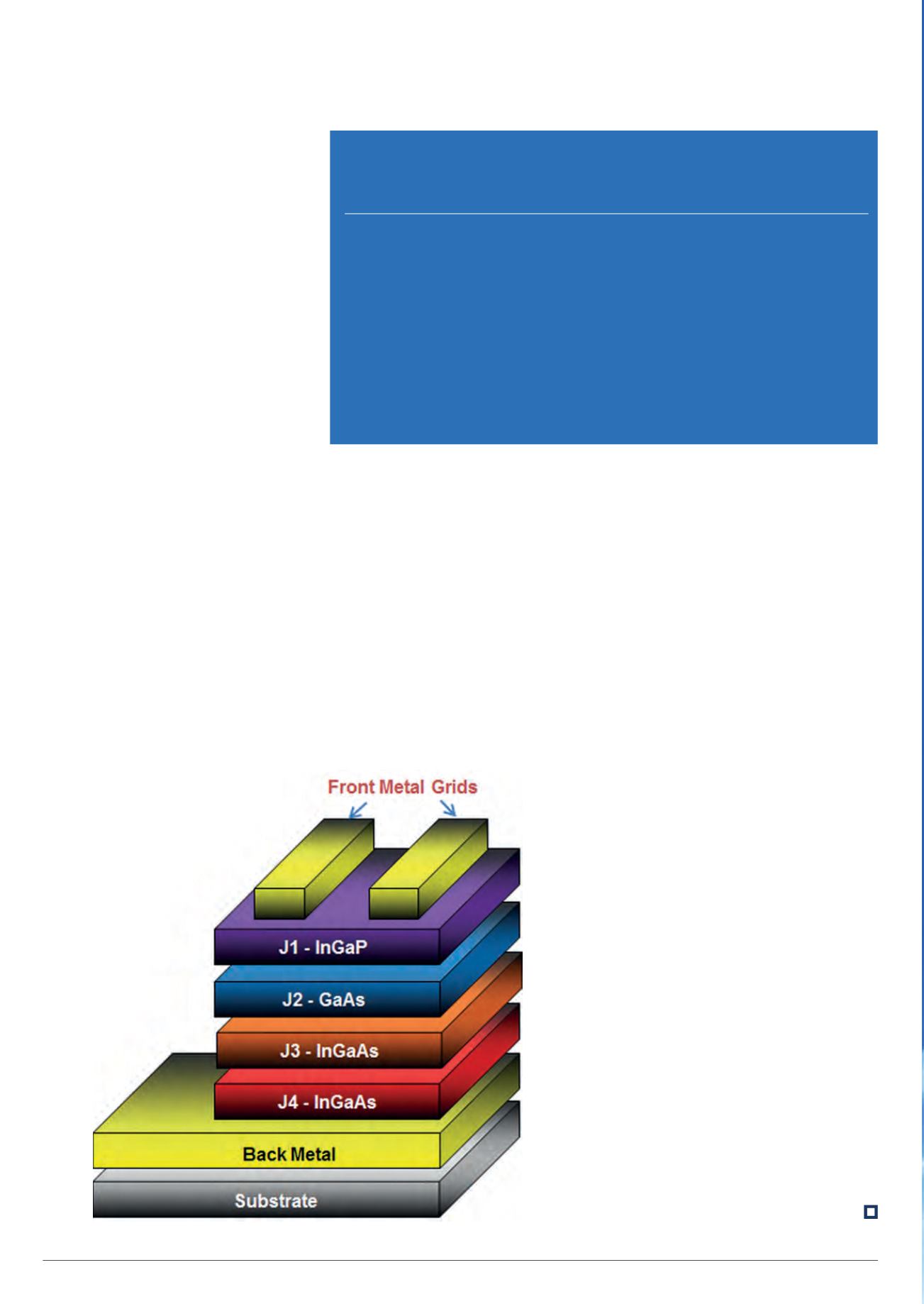

84
Focus
|
Solar power
22 V multiplied by 1 A, that makes 22 W.
Specifying a solar technology is simply
a matter of studying the requirements of
the vehicle – how much power and at
what voltage it needs, and by dividing
power by voltage to fnd how much
current is required to charge the battery
and run the load. Then you make a
rectangular arrangement of solar cells to
give you that voltage and that current.
The future
It is clear that in the future the solar
industry will focus on pushing the
boundaries of effciency. One way to
achieve that will be to study the different
band gaps in the sunlight for the
junctions to collect more light.
One industry player is already working
on a six-junction device in the inverted
metaphoric platform that will collect
different levels of light at a specifc energy.
The inverted metamorphic multi-junction
solar cell design is grown inverted, upside
down compared with conventional multi-
junction solar cells.
This process offers improved
conversion effciency through a better
performing lattice-matched top cell, and
allows more junctions (sub-cells) to be
grown in the stack. Such developments
are already pushing effciency levels up
to 37% cent for space applications.
There is a huge and growing
commercial market for sustainable power,
with major data providers such as Google
looking at putting an internet in the sky
and making the internet available for
everyone. They may use satellites for that,
or airships or high-altitude long-endurance
UAVs, but whichever they choose they will
all need electrical power of some sort.
Then there are military applications.
For the military market, the ability to
have higher performance solar cells for
increased duration for drones to look
over the horizon, to be sent out for longer
missions and loiter over targets or areas
being reconnoitred for longer periods of
time, has a great value to the military.
For this the solar power industry
is looking to develop enhanced
performance using space-grade cells
of two to three times as high effciency
as can be had with the commercial
terrestrial cells. With the ability to extend
UAV durations to two, three or even up to
eight hours by recharging the onboard
battery with solar it opens up a whole
new set of missions.
That applies not just to hand-launched
craft but also to some of the high-altitude,
long-duration vehicles that provide a
lot of reconnaissance and intelligence
gathering. That interests the military, and
with the military willing to pay a bit more
for those capabilities, that may well drive
the rest of the industry forward.
Acknowledgements
The author would like to thank Ken Steele
at Alliance Spacesystems, Ted Stern at
SolAero, Ray Chan and Noren Pan at ML
Devices, and Rich Kapusta and Robert
Parenti at Alta Devices for their help with
researching this article.
June/July 2016 |
Unmanned Systems Technology
USA
Alta Devices
+1 408 988 8600
www.altadevices.comAscent Solar Technologies
+1 720 872 5000
www.ascentsolar.comMicroLink Devices
+1 847 588 3001
www.mldevices.comSolAero Technologies
+1 505-332-5000
www.solaerotech.comSome examples of
solar power-related suppliers
The formation of a four-junction cell
(Courtesy of SolAero Technologies)









